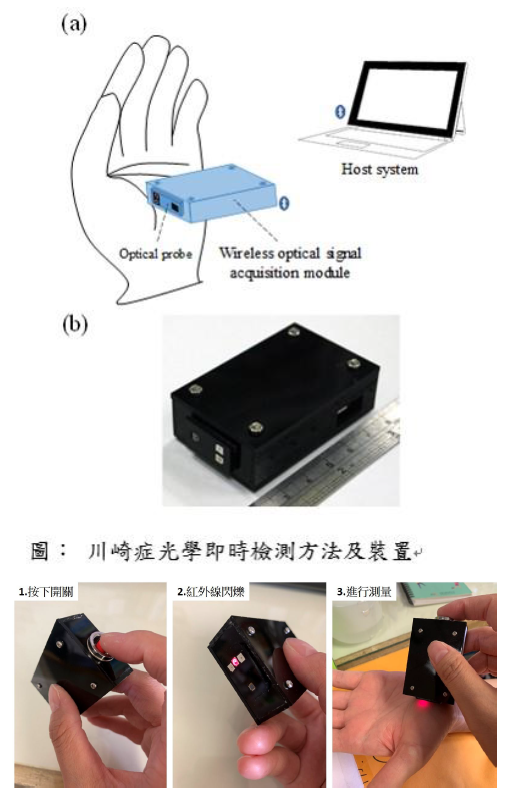
Artificial Intelligence and wireless optical device identify Kawasaki disease and multiple systemic inflammatory syndrome in children (MIS-C) caused by COVID-19
2020-11-10
Artificial Intelligence and wireless optical device identify Kawasaki disease and multiple systemic inflammatory syndrome in children (MIS-C) caused by COVID-19
Kaohsiung Chang Gung Memorial Hospital/ National Chiao Tung University
The first optical device for identify Kawasaki disease and/or multiple system inflammatory syndrome in children (MIS-C, that is caused by COVID-19) will help to save the children's heart from damage and prevent long time sequel. Near-infrared diffuse optical technique, which is a noninvasive method for monitoring changes in hemoglobin concentrations, relative oxyhemoglobin (HbO2), deoxyhemoglobin (Hb), total hemoglobin (HbT), and H2O concentrations, and tissue oxygen saturation (StO2). Artificial intelligence with optical device calculate the result within just one second and without any blood drawing or any tissue samples needed. It is totally a non-invasive detection device with high accuracy and convenience for clinician at medical department or parents at home. Coronary artery lesions and heart injury are the most severe complications of Kawasaki disease and MIS-C. This optical device will help to survey any children with fever more than 4 days especial in the COVID-19 pandemic area to prevent heart injury.
Epidemic Prevention Advantage:
1. Artificial intelligence and Optical detection device and method
2. Non-invasive method without blood draw
3. COVID-19 induced multiple systemic inflammatory syndrome in children (MIS-C)
4. The first detection device for Kawasaki disease in the world
5. detection complete in just one second
Collaboration Options:Development of product for clinical and home usage, Sale
